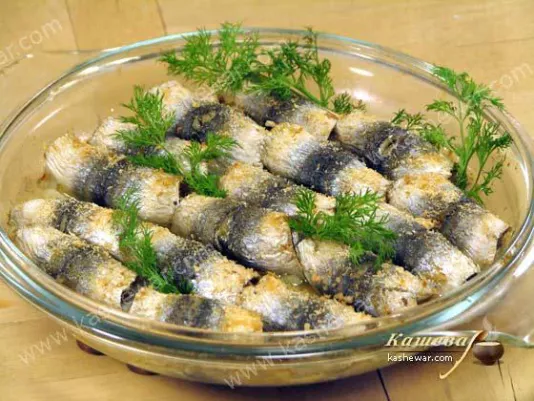Sandwich with Baltic Herring and Pickled Onions
Sandwich with baltic herring and pickled onions - a recipe from Swedish cuisine, a fragrant and spicy sandwich made from black bread.

Swedish cuisine is a reflection of the Scandinavian approach to food: restraint, seasonality, and respect for the product. It evolved under the harsh conditions of the North, where the value of each ingredient was determined by its nutritional content, storage capability, and accessibility. Sweden developed food preservation techniques over centuries: salting, fermentation, smoking, and drying. A traditional Swedish dish is the result of a practical approach to cooking, complemented by a refined taste and harmony on the plate. Fish, meat, potatoes, fermented dairy products, wild berries, and root vegetables form the base of most dishes. The outward simplicity of Swedish cuisine conceals deep knowledge of ingredients and a balanced flavor profile. This is what has earned it a place among respected European culinary traditions and sparked global interest from both gastronomes and home cooks.
Swedish cuisine recipes are based on ancient culinary practices and favor simple cooking without unnecessary complexity. Many dishes use a small number of ingredients that pair well together and are highly nutritious. For example, köttbullar are classic meatballs made of beef or pork, pan-fried and served with mashed potatoes and lingonberry sauce. Another iconic dish is sill, or pickled herring, which comes in dozens of variations: with mustard, onion, dill, curry. Pytt i panna is a traditional hash made of fried leftovers of meat, potatoes, and onions, served with an egg. Desserts also play an important role: the most famous are cinnamon buns (kanelbullar), which have become a symbol of the fika coffee break. Most dishes can be prepared at home without any special kitchen equipment, making Swedish recipes accessible to everyone.
Sweden is located in the northern part of Europe, where winters last most of the year and the growing season is short. This led to the development of food preservation strategies – hence the popularity of preserved and fermented products. Herring, salmon, and cod were salted, dried, smoked, or pickled for long-term storage. Meat was often salted or processed into sausages and pâtés. Root vegetables such as potatoes, turnips, and carrots were kept in cellars and used throughout the winter. Berries and mushrooms gathered in summer were dried or used to make jam. Home preservation traditions have endured to this day. Modern Swedish cuisine continues to use these techniques while combining them with new approaches. This has allowed Swedish cuisine to remain true to its roots while integrating into the global gastronomic scene.
Among the main ingredients of Swedish cuisine are fish (herring, salmon, cod), meat (beef, pork), eggs, potatoes, beets, cabbage, barley, rye flour, dairy products, and butter. Lingonberries are especially important – they are served with meat, game, and meatballs. Fermented dairy drinks, yogurts, and cheeses are also popular. A hallmark of Swedish cuisine is the minimal use of spices: salt, pepper, dill, and bay leaf dominate. This helps emphasize the natural flavor of the product. Typical dishes combine hot and cold, salty and sour elements. For example, baked potatoes with herring and mustard sauce or meat served with jam. These contrasts create a unique gastronomic palette in Sweden that blends simplicity, nutrition, and balance.
Holidays in Sweden are accompanied by a special culinary atmosphere. The Christmas table (julbord) is the centerpiece of December celebrations: Swedes prepare several types of herring, ham, meatballs, eggs with roe, pâtés, and rice pudding. Easter (påsk) features dishes with eggs, greens, and fish, often including baked salmon or lamb. Midsommar – the summer solstice celebration – is marked with new potatoes with dill, strawberries, herring, and light appetizers. In August, Swedes host kräftskiva – parties dedicated to crayfish. Every festive dish holds symbolic meaning; they are not just filling – they convey the mood and cultural identity of the nation. Passing down recipes and traditions within families is an important element that maintains intergenerational connections.
Today, Swedish cuisine is actively evolving toward healthy eating, environmental awareness, and global exchange of ideas. Vegetarian and vegan dishes, alternative proteins, and locally grown organic products are gaining popularity. At the same time, chefs are creating fusion versions of classic recipes: herring with teriyaki sauce, chickpea meatballs, and kanelbullar with tropical fruit fillings. Swedish restaurants experiment with presentation, using both minimalist and modern styles. Meanwhile, home cooking preserves classic flavors. This harmony between tradition and innovation, along with respect for nature, makes Swedish gastronomy a model of sustainable culinary development on a global scale.